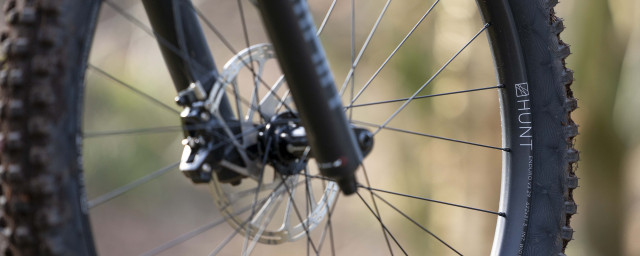Easton release new Gravel Shifting Rings with 2x chainrings specifically for gravel and adventure bikes

We'd agree with Easton when they say 'road gearing isn't made for gravel' so welcome the news of their new Gravel Shifting Rings released today. The chainrings provide a choice of direct mount 2x in three sizes, made with gravel and adventure bikes in mind.
In essence, Easton says that regular road bike gearing (53/39, 52/36 and 50/34t) is too tall for gravel bikes and the type of riding undertaken on these bikes. Having first-hand experience of this with bikes such as All City Cycles Space Horse with its 105 groupset with a 50/34 crankset and to some extent, our Specialized Diverge 48/32t set up. Larger tires make standard gearing effectively larger, and we've found ourselves overgeared. Until now the option has been to swap to a 1x drivetrain with a smaller front chain ring but this won't suit all tastes.
The new chainrings are made specifically for the Easton EC90 SL crankset, using a direct mount construction that forgoes the typical spider for less weight.The three options are 47/32, 46/36 and 46/30, Easton says the 47/32 as the ideal gravel combo, while the 46/36 is perfect for cross, and the 46/30 the set for adventure riding with big days in the saddle where you might need a bailout gear. The chainrings weigh between 194, 192 and 182g respectively. Easton gives a complete crankset weight of 540g for a 172.5mm crank with 47/32t rings and no bottom bracket. Built out of EA90 aluminium with black anodizing, the rings have a 45mm chainline and a retail price of £149.99.















3 comments
Maybe, but it looks to be the older cable pull ratio (i.e. not newer 105, ultergra, DA compatible).
Or there's this:
http://www.interlocracing.com/shifters-derailleurs/sub-c-front-derailleur-double
I think this is great - in the same way that few 'normal' riders need 53-39 or similar, compact is also not appropriate for many, particularly given that triple rings are less available.
That said, I've run 46-30, and although the 16T difference is in theory within what front mechs can deal with, the percentage difference between the rings means that in reality things don't quite function as they do with 50-34 or similar (i.e. 32% difference between 34 and 50, where-as 35% difference between 30 and 36).
The result is that the gap feels much bigger, and mech alignment is never quite right (chain rub is much mor of an issue) and in small-small (yes I know...) the chain can catch on the outer ring.
Either Shimano/Sram need to produce front mechs that are designed for smaller rings/bigger percentage difference between the rings (a road mech with a mount bike cage?), or people should look at providing 44-30 or 46-32 in road bike cranksets.